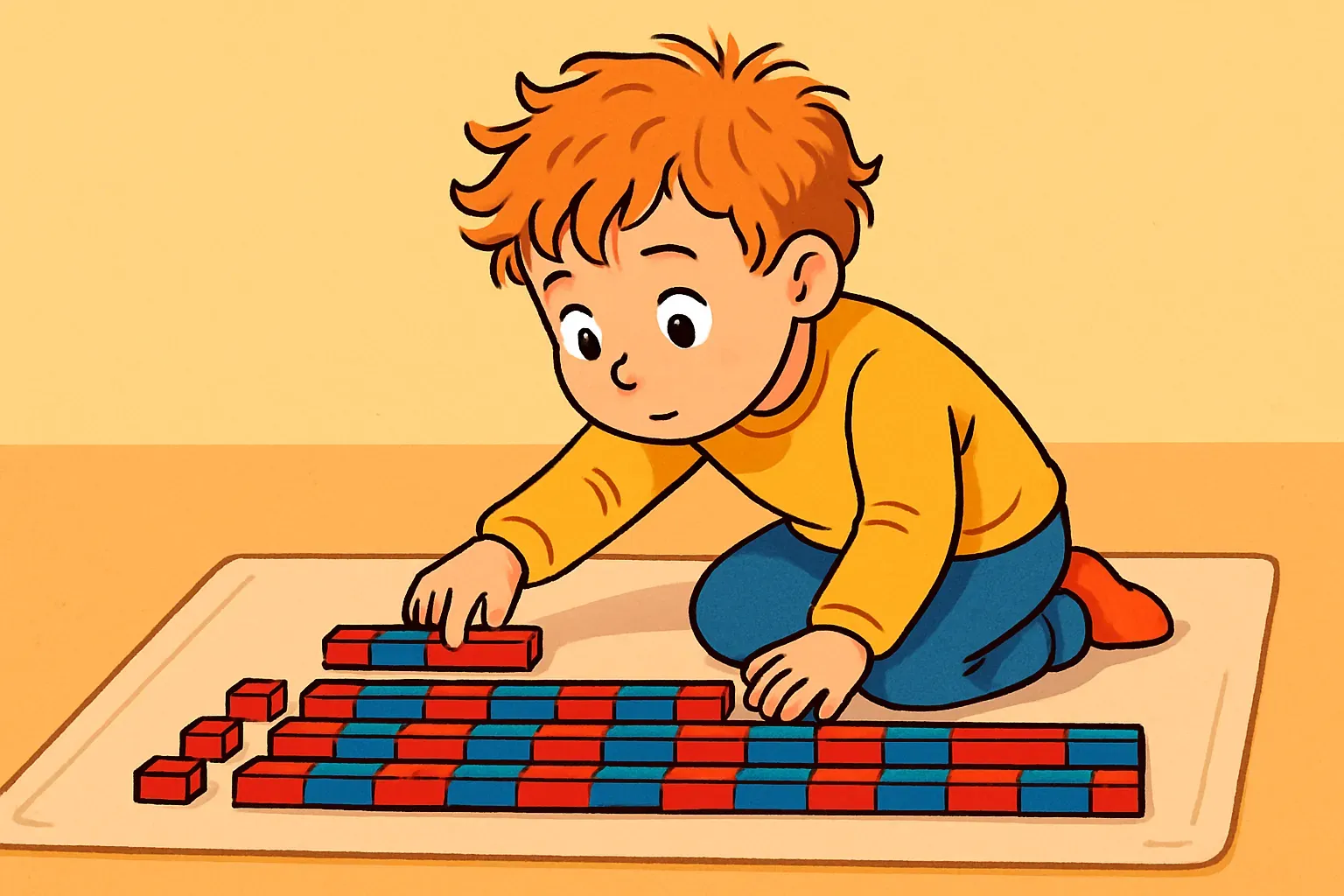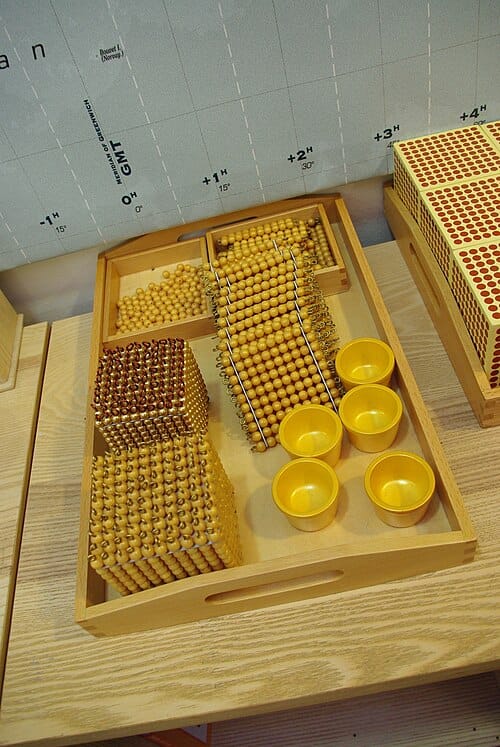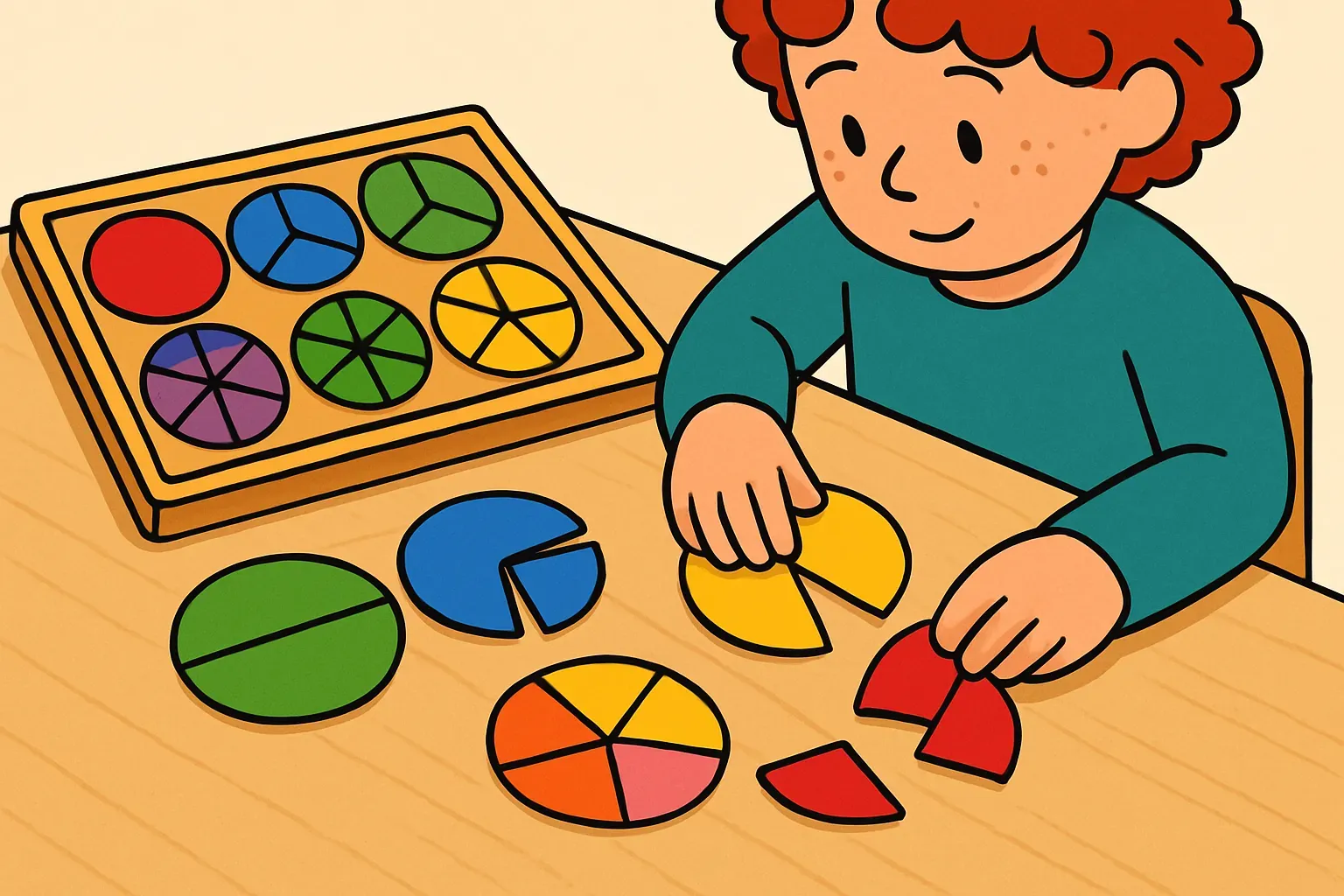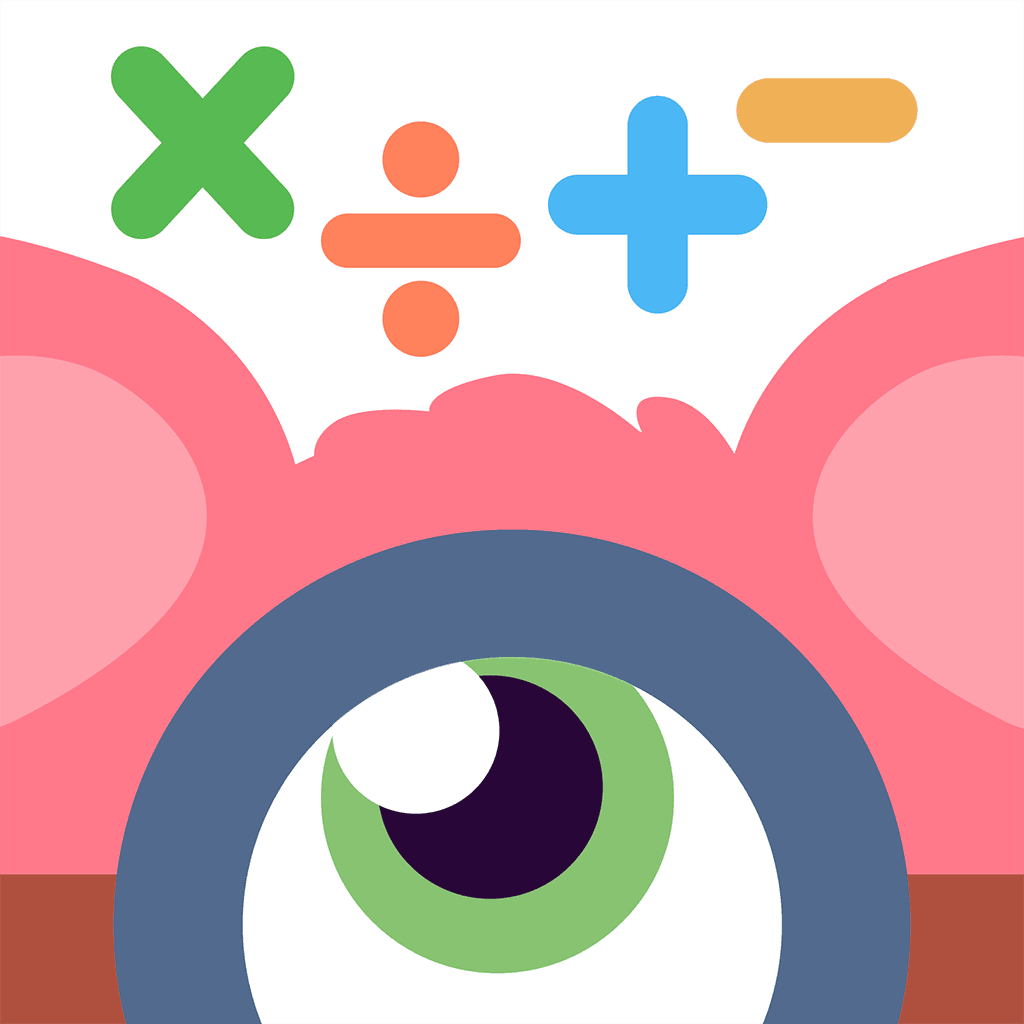Montessori Math Tools: Are They a Game-Changer for Autistic & ADHD Learners?
TL;DR
Montessori math tools offer significant benefits for neurodivergent learners through their multi-sensory approach, concrete-to-abstract progression, and self-paced learning environment. Research shows these materials can help autistic and ADHD children develop stronger mathematical understanding by supporting executive functioning, reducing cognitive load, and providing visual-spatial representations that align with their learning strengths.
Introduction
Mathematics education presents unique challenges for neurodivergent learners, particularly those with autism spectrum disorder (ASD) and attention deficit hyperactivity disorder (ADHD). Traditional approaches often rely heavily on abstract concepts, verbal instruction, and standardized pacing - all of which can create significant barriers for children whose brains process information differently. Montessori mathematics tools have emerged as a potential game-changer in this space.
Developed by Dr. Maria Montessori in the early 20th century, these hands-on, sequential materials were designed to make abstract mathematical concepts concrete and accessible. Although Dr. Montessori developed her methods decades before modern understandings of neurodiversity, her approach seems almost tailor-made for the learning profiles of many autistic and ADHD children.
Do these colorful beads, wooden number rods, and geometric cabinets truly offer advantages for neurodivergent learners? Or is their effectiveness merely anecdotal? This article examines the evidence behind Montessori math tools for autistic and ADHD learners, exploring both their potential benefits and limitations.
Understanding the Neurodivergent Math Experience
Before diving into Montessori methods, it's important to understand the specific challenges neurodivergent children often face with mathematics.
A 2022 study published in the Journal of Autism and Developmental Disorders found that 57% of autistic children showed problem-solving difficulties compared to 23% of their neurotypical peers (Polo-Blanco et al., 2022). The researchers noted that autistic children often relied on more rudimentary strategies like drawing and counting that persisted longer than in neurotypical children, who typically progressed to more abstract approaches.
For children with ADHD, challenges often center around executive functioning difficulties that impact working memory, cognitive flexibility, and sustained attention—all critical components of mathematical learning. According to Murphy-Ryan (2016), approximately 12% of children in the United States have attentional difficulties meeting the criteria for ADHD, with this number having increased by 43% in just eight years according to CDC data.
These challenges don't reflect a lack of mathematical ability, but rather a mismatch between traditional teaching methods and neurodivergent learning styles. This is where alternative approaches like Montessori mathematics can offer significant advantages.
The Montessori Math Approach: Key Principles
Montessori mathematics follows several core principles that align particularly well with neurodivergent learning profiles:
Concrete to Abstract Progression
Montessori math materials are designed to move systematically from concrete, hands-on experiences to increasingly abstract concepts. This progression begins with physical objects that children can manipulate (like number rods and golden bead materials), gradually transitions to more representational materials, and eventually leads to abstract mathematical operations.
This approach is particularly valuable for neurodivergent learners who may struggle with abstract thinking. As Koifman (2024) notes in research published in the Open Access Journal of Behavioural Science & Psychology, "Multi-sensory activities and hands-on learning facilitate learning for neurodivergent children," allowing them to build conceptual understanding through physical experience before moving to symbolic representation.
Learn more about Concrete-Representational-Abstract (CRA) approach and how to use it at home.
Self-Paced Learning and Independence
A fundamental aspect of Montessori education is allowing children to progress at their own pace, without the pressure of meeting predetermined grade-level benchmarks. This self-pacing is particularly beneficial for neurodivergent learners who may need more time to process information or who may progress rapidly in areas of special interest.
The self-correcting nature of many Montessori materials also supports independence and reduces performance anxiety. For example, when a child works with the bead chains for multiplication, the physical arrangement of the beads provides immediate feedback about whether the work is correct, without requiring teacher intervention or creating opportunities for public failure.
Visual and Spatial Clarity
Montessori math materials are designed with visual clarity and consistency. The decimal system materials, for instance, use consistent color coding (green for units, blue for tens, red for hundreds) and spatial arrangements to represent numerical relationships. This visual structure helps children recognize patterns and relationships between numbers.
For autistic learners who often demonstrate strengths in visual-spatial processing, these materials can leverage their natural learning style. Similarly, for ADHD learners who may struggle with maintaining attention during verbal instruction, the visual clarity of the materials can provide an anchor for focus.
Evidence-Based Benefits for Neurodivergent Learners
Supporting Executive Functioning
Executive functioning challenges are common in both autism and ADHD, affecting skills like working memory, cognitive flexibility, and inhibitory control. These skills are crucial for mathematical learning, particularly when solving multi-step problems or switching between different mathematical operations.
Montessori math materials naturally support executive functioning development through their sequential, organized nature. Research by Polo-Blanco et al. (2022) found that poor-performing autistic children showed comparatively lower scores in inhibition, theory of mind, and verbal comprehension—all areas that can be supported through the structured yet flexible Montessori approach.
The physical manipulation of materials also reduces cognitive load by externalizing some of the mental processes required for mathematical operations. For example, when using the stamp game for subtraction, the physical movement of tokens represents the regrouping process, reducing the mental effort required to track this operation.
Reducing Sensory and Attentional Barriers
Traditional classrooms can be overwhelming environments for neurodivergent children, with multiple sensory inputs competing for attention. The Montessori approach addresses this by creating a more controlled sensory environment and allowing for movement within the learning process.
Murphy-Ryan (2016) highlights that "the structured Montessori environment combined with freedom of movement supports children with attentional challenges." This balance is particularly important for ADHD learners, who often benefit from incorporating movement into learning activities.
The tactile nature of Montessori materials also provides proprioceptive feedback that can help with focus and attention. The weight of the golden beads, the texture of the sandpaper numerals, and the physical act of moving materials all engage the sensory system in ways that can support learning and attention.
Building Mathematical Foundations Through Pattern Recognition
Many autistic learners excel at pattern recognition, and Montessori math materials capitalize on this strength. The systematic progression of materials helps children discover mathematical patterns and relationships through hands-on exploration.
For example, the bead chains used for multiplication and skip counting create visual and tactile patterns that make these concepts more accessible. Similarly, the golden bead materials provide a concrete representation of our base-10 number system, making place value—a concept many children struggle with—visually apparent.
Practical Applications: Five Key Montessori Math Tools for Neurodivergent Learners
1. Number Rods and Numerals

These red and blue segmented rods physically represent quantities from 1 to 10, allowing children to see and feel the difference between numbers. For neurodivergent learners who may struggle with number sense, this concrete representation builds a foundation for understanding quantity before introducing symbols.
The accompanying sandpaper numerals add a tactile dimension to learning number symbols, creating a multi-sensory experience that supports memory and concept formation. Research indicates that multi-sensory approaches are particularly effective for children with attention difficulties, as they engage different parts of the brain simultaneously (Koifman, 2024).
2. Golden Bead Material

This iconic Montessori material concretely represents our decimal system, with individual beads for units, bars of 10 beads for tens, squares of 100 beads for hundreds, and cubes of 1000 beads for thousands. The physical weight and visual differences between these quantities make place value - a concept many neurodivergent learners struggle with - tangible and clear.
For autistic learners who may excel at visual-spatial tasks but struggle with the abstract nature of place value, the golden bead material provides a bridge between concrete experience and mathematical abstraction. The consistent color coding and systematic arrangement also support pattern recognition, a common strength in many autistic learners.
3. Stamp Game
This material uses colored tokens to represent different place values, allowing children to perform mathematical operations like addition, subtraction, multiplication, and division. The physical movement of tokens makes abstract operations concrete and helps externalize the mental processes involved.
For ADHD learners who may struggle with working memory and maintaining attention during multi-step problems, the stamp game reduces cognitive load by providing external representation of the mathematical process. The defined workspace and clear organization of materials also support executive functioning skills like organization and sequential processing.
4. Bead Chains and Squares
These materials support multiplication, skip counting, and understanding of squares and cubes. The physical arrangement of beads in chains of varying lengths creates visual patterns that make multiplication relationships apparent.
For neurodivergent learners who may struggle with rote memorization of multiplication facts, the bead chains offer a conceptual understanding of multiplication as repeated addition. The visual patterns created by the chains also support the pattern recognition strengths common in many autistic learners.
5. Fraction Circles

These materials provide a concrete representation of fractions as parts of a whole, with color-coded pieces representing different denominators. The physical manipulation of these pieces allows children to discover equivalence and relationships between fractions through hands-on exploration.
For neurodivergent learners who may struggle with the abstract nature of fractions, these materials make the concepts visible and tangible. The consistent color coding (all thirds are the same color, all fourths another color, etc.) also supports pattern recognition and memory.
Considerations and Adaptations
While Montessori math tools offer significant benefits for many neurodivergent learners, it's important to recognize that no single approach works for all children. Individual differences in learning profiles, sensory sensitivities, and interests must be considered when implementing these materials.
Some autistic children may be particularly sensitive to certain textures or may prefer to observe rather than handle materials initially. Others may become intensely focused on organizing or arranging the materials rather than using them for their intended mathematical purpose. For ADHD learners, the freedom of choice in a Montessori environment may sometimes be overwhelming without appropriate scaffolding.
Koifman (2024) emphasizes that "Montessori principles effectively recognize and adjust to each child's developmental level and interests," highlighting the importance of personalization within the Montessori framework. This may include modifications such as:
- Providing clear visual boundaries for workspace organization
- Breaking down activities into smaller steps for children who become overwhelmed
- Allowing for observation before direct handling for sensory-sensitive children
- Incorporating special interests into mathematical activities to increase engagement
- Providing additional visual supports or social stories about how to use materials
Bridging Home and School: Implementing Montessori Math Approaches
For parents interested in supporting their neurodivergent child's mathematical learning through Montessori approaches, there are several strategies to consider:
Collaborate with Educators
If your child attends a traditional school, open communication with teachers about how Montessori-inspired approaches might be incorporated into your child's learning plan can be valuable. Many special education plans can accommodate alternative materials and approaches when their benefits are clearly articulated.
Create a Prepared Environment at Home
Even without a full set of Montessori materials, parents can create a home environment that supports mathematical learning through concrete experiences. Simple materials like counting objects, measuring tools, and fraction pieces can be incorporated into daily activities.
Focus on Process Over Product
The Montessori approach emphasizes the process of discovery rather than producing correct answers. For neurodivergent learners who may experience math anxiety, shifting focus from getting the right answer to understanding concepts can reduce stress and build confidence.
Connect Math to Real-Life Applications
Montessori education emphasizes the practical application of mathematical concepts. Involving children in cooking (measurement), shopping (money and calculation), and building projects (geometry and measurement) can make mathematical concepts meaningful and relevant.
For more strategies on supporting neurodivergent math learners at home, see our article on Visual Math Strategies That Actually Work for Neurodivergent Kids.
Frequently Asked Questions
Are Montessori math materials appropriate for all neurodivergent children?
While many neurodivergent children benefit from Montessori math materials, individual needs and preferences vary widely. Some children may be overwhelmed by certain sensory aspects of the materials or may need additional structure and guidance. The key is to observe your child's response and adapt accordingly. The principles of concrete-to-abstract progression and multi-sensory learning are broadly beneficial, but the specific implementation may need adjustment based on your child's unique profile.
How do I know if my child is ready to move from concrete materials to more abstract concepts?
In the Montessori approach, children demonstrate readiness through their interest, engagement, and mastery with materials. Signs that a child may be ready to move toward more abstract work include spontaneously making connections between materials and symbols, accurately using mathematical language, and showing confidence with the concrete materials. However, it's important to note that neurodivergent learners may need to return to concrete materials even after working with abstract concepts, especially when learning new or complex ideas.
Can Montessori math materials help with specific math learning disabilities like dyscalculia?
Research suggests that the multi-sensory, concrete approach of Montessori materials can be beneficial for children with specific math learning disabilities. The emphasis on building conceptual understanding before procedural fluency aligns with recommended interventions for dyscalculia. However, children with severe math learning disabilities may need additional specialized interventions alongside Montessori approaches. Consulting with educational specialists who understand both Montessori methods and learning disabilities can help create an optimal support plan.
How can I incorporate Montessori math principles if my child attends a traditional school?
Many Montessori principles can be adapted for home use to supplement traditional school instruction. Creating a designated space with accessible math materials, allowing time for exploration and discovery, and connecting math to practical life activities are all ways to incorporate Montessori approaches at home. Additionally, some traditional schools are increasingly open to incorporating alternative materials and approaches, especially when included in individualized education plans for neurodivergent students.
At what age should I introduce Montessori math materials to my neurodivergent child?
Montessori math materials are typically introduced to children around age 3-4 with simple counting and numeral recognition activities, progressing to more complex concepts as the child develops. However, for neurodivergent children, developmental readiness rather than chronological age should guide introduction. Some neurodivergent children may benefit from earlier exposure to certain materials based on their interests and strengths, while others may need more time with foundational concepts. The key is to follow the child's lead while providing appropriate scaffolding and support.
Conclusion
Montessori math tools offer a promising approach for many autistic and ADHD learners, providing concrete, visual, and systematic pathways to mathematical understanding. The evidence suggests that these materials can leverage the strengths of neurodivergent learning styles while supporting areas of challenge, particularly in executive functioning, attention, and abstract thinking.
However, it's important to recognize that effective implementation requires understanding both the principles behind the materials and the unique needs of each child.
The most successful approach combines the structured, sequential nature of Montessori materials with an understanding of neurodivergent learning profiles and a willingness to adapt based on individual needs.
For parents and educators seeking to support neurodivergent math learners, Montessori math tools offer not just a different way of teaching mathematics, but a different way of thinking about mathematical learning - one that embraces diversity in thinking and learning styles while building on the natural curiosity and capabilities of every child.
For more insights on supporting neurodivergent math learners, explore our articles on Math Routines That Support Autistic Kids and Project-Based Math for Kids with Autism, ADHD & Dyscalculia.
References
Koifman, J. (2024). Montessori for Children with Neurodiversity. Open Access Journal of Behavioural Science & Psychology, 7(2). https://academicstrive.com/OAJBSP/OAJBSP180129.pdf
Murphy-Ryan, M. (2016). Helping Children with Attentional Challenges in a Montessori Classroom: The Role of the Physician. Journal of Montessori Research. https://files.eric.ed.gov/fulltext/EJ1144543.pdf
Polo-Blanco, I., Suárez-Pinilla, P., Goñi-Cervera, J., Suárez-Pinilla, M., & Payá, B. (2022). Comparison of Mathematics Problem-Solving Abilities in Autistic and Non-autistic Children: the Influence of Cognitive Profile. Journal of Autism and Developmental Disorders, 54(1), 353-365. https://doi.org/10.1007/s10803-022-05802-w

